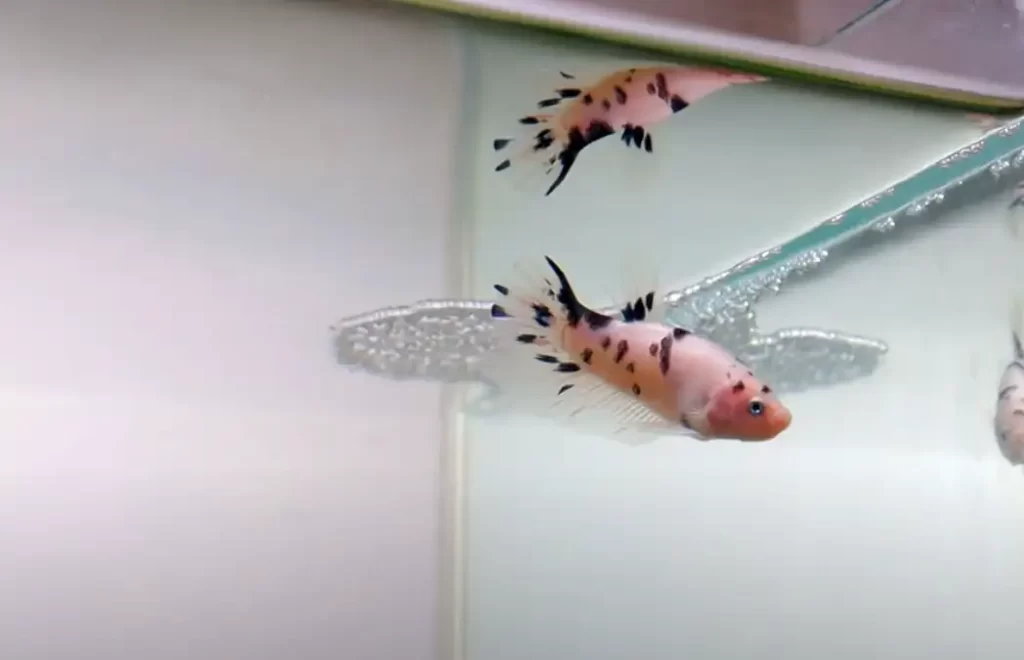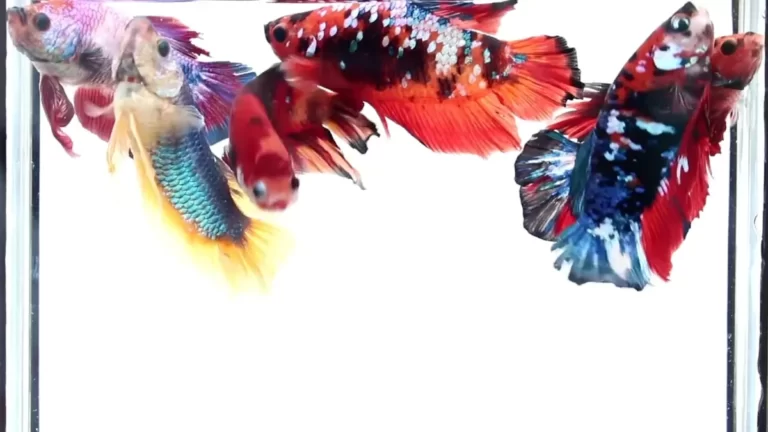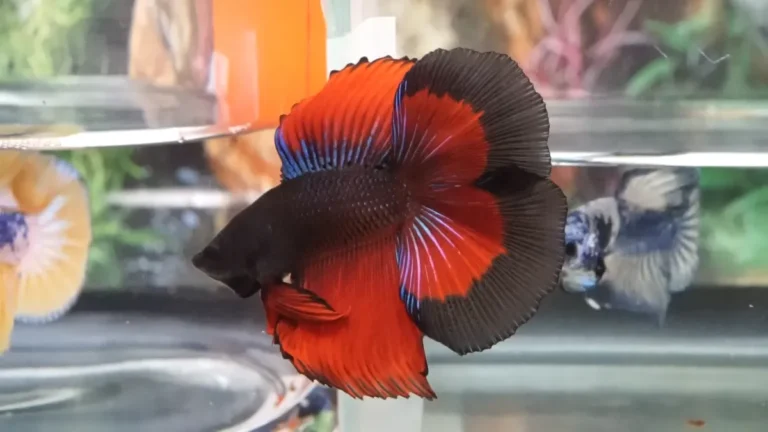How Many Female Bettas Can You Keep in a 30-Gallon Tank: Expert Advice
Keeping betta fish is a popular hobby for many aquarium enthusiasts. However, when it comes to keeping female bettas, many people wonder how many they can keep in – a 30-gallon tank can house 8 to 10 female bettas in a sorority.
Understanding betta fish behavior is crucial when determining how many female bettas can be kept in a tank. Female bettas can be kept together in groups known as sororities, but it is essential to ensure that the tank is large enough and that there are enough hiding places for the fish.
In this article, we will delve into the world of female bettas and explore how many of them you can comfortably accommodate in a 30-gallon tank.
Key Takeaways
- Understanding betta fish behavior is crucial when determining how many female bettas can be kept in a tank.
- A 30-gallon tank is generally recommended for a sorority of female bettas.
- Properly cycling the tank and maintaining water quality are crucial for the health and safety of the fish.

How Many Female Bettas Can You Keep in a 30-Gallon Tank
The correct number of female bettas that can be kept in a 30-gallon tank is between 8 to 10 fish. It is important to note that the tank should be heavily planted and have plenty of hiding places to reduce aggression and provide a sense of security for the fish. Bettas are territorial fish, and having enough space is crucial to prevent fighting and stress.
Female bettas can be kept together in a 30-gallon tank, but the number of fish that can be housed in the aquarium depends on a few factors. According to The Spruce Pets, only one male betta can be kept in an aquarium as males will fight with one another. However, female bettas can be kept together in a group, known as a sorority.
When setting up a betta sorority, it is recommended to introduce all the fish at the same time to avoid aggression between established and new members. It is also crucial to quarantine new fish before introducing them to the main tank to prevent the spread of disease.
It is important to note that adding other fish to the tank can be risky as some species may not be compatible with bettas. Before adding any other fish to the tank, it is important to research and choose compatible species.
Understanding Betta Fish Behavior
Betta fish, also known as Siamese fighting fish, are known for their vibrant colors and unique personalities. Understanding their behavior is crucial for keeping them healthy and happy in a 30-gallon tank. This section will cover two important aspects of betta fish behavior: aggression and social interaction.

Aggression in Female Bettas
While male bettas are known for their aggression towards other males, female bettas can also display aggressive behavior towards each other. This is especially true if they are housed in a small tank or if there are not enough hiding spots. In a 30-gallon tank, it is recommended to keep 8-10 female bettas and provide plenty of hiding places to reduce aggression.
It is also important to note that bettas have a hierarchy system and will establish a pecking order. Some fighting may occur as they establish this hierarchy, but it should subside once the order is established. However, if the aggression continues, it may be necessary to remove one of the bettas from the tank.
Social Interaction Among Bettas
Bettas are social fish and can thrive in a community setting, especially female bettas. In a 30-gallon tank, it is recommended to keep 8-10 female bettas together. They will establish a hierarchy and socialize with each other.
It is important to avoid housing male and female bettas together, as the males may become aggressive towards the females. It is also not recommended to house other fish with bettas, as they may nip at the bettas’ fins or be aggressive towards them.
Tank Size and Betta Fish
Importance of Tank Size
Proper tank size is crucial for the health and well-being of betta fish. Bettas are active fish that require ample space to swim and explore. A tank that is too small can cause stress and lead to health problems, including fin rot, fungal infections, and swim bladder issues.
For female bettas, a 30-gallon tank is ideal for a sorority setup. This size provides enough space for each fish to establish its territory and reduces the risk of aggression and fighting. A larger tank also means that the water parameters are more stable, making it easier to maintain a healthy environment for the fish.
Impact of Overcrowding
Overcrowding is a common problem in betta fish tanks. When too many fish are crammed into a small space, they become stressed and aggressive towards each other. In a sorority setup, it is essential to maintain a proper female-to-tank ratio to prevent overcrowding.
In a 30-gallon tank, up to seven female bettas can live together peacefully. However, it is important to note that adding too many tank mates can lead to overcrowding and aggression. It is recommended to keep the number of tank mates to a minimum and choose species that are compatible with bettas.
Creating a Suitable Environment for Multiple Bettas
When keeping multiple female bettas in a 30-gallon tank, it is important to create a suitable environment that promotes their health and well-being. This section will discuss the necessary tank setup and feeding regime for multiple bettas.
Tank Setup
To create a suitable environment for multiple bettas, it is essential to provide them with enough space to swim and establish their territories. A 30-gallon tank is a suitable size for multiple female bettas, as it provides enough space for them to swim and explore.
When setting up the tank, it is important to include plenty of hiding places and decorations, such as plants and rocks. This will help to reduce aggression and provide the bettas with places to retreat to if they feel threatened. It is also important to maintain a consistent water temperature and quality, as bettas are sensitive to changes in their environment.
Feeding Regime
Feeding multiple bettas can be a challenge, as they can be territorial when it comes to food. It is important to feed them small, frequent meals throughout the day to prevent aggression and ensure that all the bettas are getting enough food.
When feeding multiple bettas, it is recommended to use a feeding ring or divider to prevent them from fighting over food. This will also help to ensure that each betta is getting the appropriate amount of food.
It is important to provide a balanced diet for bettas, including both dry and live foods. Dry foods, such as pellets and flakes, should make up the majority of their diet, while live foods, such as brine shrimp and bloodworms, can be given as treats.

Overall, creating a suitable environment for multiple female bettas in a 30-gallon tank requires careful attention to tank setup and feeding regime. By providing enough space, hiding places, and a balanced diet, bettas can thrive in a peaceful and healthy environment.
Health and Safety Considerations
When keeping female bettas in a 30-gallon tank, it is important to monitor their health and take necessary safety precautions. This section will discuss some considerations to keep in mind.

Monitoring Betta Health
To ensure the health of your female bettas, it is crucial to monitor their behavior and appearance regularly. Here are some signs to look out for:
- Lethargy or lack of activity
- Loss of appetite
- Faded or discolored scales
- Clamped fins
- Abnormal swimming behavior
If you notice any of these signs, it may indicate a health issue. You should take immediate action by checking the water parameters and making any necessary adjustments. Additionally, consider seeking advice from a veterinarian or experienced betta keeper.
Safety Precautions
When keeping female bettas in a 30-gallon tank, there are some safety precautions you should take to prevent harm to the fish and yourself.
- Avoid overcrowding the tank. Overcrowding can lead to stress, aggression, and potential health issues. As a general rule, keep four to six female bettas in a 30-gallon tank.
- Ensure proper filtration. A good filtration system is crucial in maintaining water quality and keeping your bettas healthy.
- Avoid sharp decorations. Sharp edges on decorations or plants can tear the fins of your bettas. Choose decorations that are smooth and safe for fish.
- Use caution when handling bettas. Betta fins are delicate and can be easily damaged. When handling your bettas, use a gentle touch and avoid grabbing their fins.
- Use appropriate water temperature. Female bettas thrive in warm water temperatures between 78-82°F. Avoid sudden temperature changes, as it can stress the fish and lead to illness.
By following these health and safety considerations, you can ensure a safe and healthy environment for your female bettas in a 30-gallon tank.
Related Posts:





